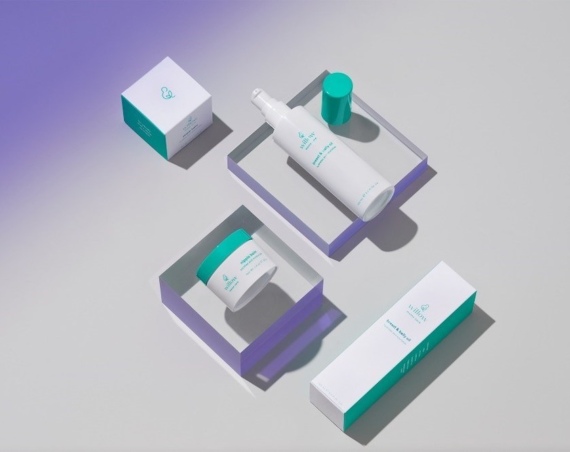
Unarguably the vaginal microbiome is getting quite a bit of press and attention lately. And rightfully so given how critical it is to overall vaginal health. A number of companies are now recognizing this opportunity, are starting to educate women, developing products and tests, and advocating for more research about how the vaginal microbiome can eventually be used as a diagnostic biomarker. There is lots of opportunity, lots of press, yet a lot of the discussion seems to still happen on the surface level. It’s time we change that!
At Femtech Insider we too have done our fair share of reporting on the vaginal health and wellness space, but like many others we yet haven’t explored the space in depth. This is about to change and it’s been exciting to sit down with Dr. Kimberly Capone, Chief Science Officer at FemTec Health, who patiently helped us understand the science, space and opportunities. Curious what we learned? Read on…
First question: What even is the vaginal microbiome?
To start from the very beginning, a microbiome is a community of organisms that live in an environment. The vaginal microbiome is therefore the collection of bacteria and other organisms that live in the vagina and collaborate to keep it in a state of health. In order to keep it in a state of health, the vaginal microbiome needs to be balanced. If it is not, you’re prone to infections and other issues.
One of the most important compounds in the vagina is lactic acid, produced by Lactobacillus bacteria. Lactic acid keeps unwanted and harmful bacteria out, which is important as the vagina is exposed to the outside world. If too much lactic acid is produced the environment becomes acidified, which makes it unliveable for other actually helpful organisms, which can cause problems as well.
Each woman’s vaginal microbiome is unique, but it is influenced by her genes, ethnicity, hygiene as well as interactions with other people. Despite its uniqueness, research has found that there are four different community state types (CSTs), essentially groups, that can help us categories and understand different risk profiles.
The whole space is still an active area of research, however early findings indicate that women with certain CSTs might be more prone to infections. CST IV, for example, which happens to be more prominent in Black, Hispanic women, is characterized by depletion of lactobacillus, which means there is less production of lactic acid and less protection against harmful bacteria, which puts women at increased risk of infection.
The conclusion? The healthier aka balanced your vaginal microbiome (or any microbiome for that matter…) is, the more likely you are to be able fight off infections.

Got it? Great! So let’s contextualize this: What’s the connection between the vaginal microbiome and overall women’s health?
As mentioned earlier, this is still an active area of research, but we know there is a connection between fertility and a dysbiotic (aka unbalanced) microbiome. There are also links to pre-term birth and pre-term abortion.
During menopause, the estrogen level drops, which leads to a drop in glycogen in the vagina. Glycogen “feeds” the lactobacilli, and a depletion of lactobacilli leads to dysbiosis in the vaginal microbiome, which can cause problems. During pregnancy on the other hand the body dials up the production of lactobacilli, as it is trying to protect the baby from harmful bacteria. This could lead to an acidic environment in the vagina, which keeps out other helpful organisms. A dysbiotic vaginal microbiome also leaves women more prone to infections like bacterial vaginosis (BV), UTIs and STIs.
Given all these links, that have already been clinically established, the vaginal microbiome could be an interesting biomarker for physicians to warn them that there might be a problem as an imbalance indicates inflammation.
As of today from clinical research we know that these connections exist, however, we do not yet understand whether there is a cause and effect relationship between the vaginal microbiome and any of them (besides BV that is).
Knowing all that… How can I protect my vaginal microbiome?
A first step to protecting your vaginal microbiome is to actually understand its state. A number of at-home tests are on the market today to help women do just that. If there is an imbalance, probiotics can help to create a more lactate-heavy environment and support better protection.
Fun-ish fact: There are 300 different species in the vagina, and probiotics, besides “reseeding” lactobacilli also include a number of other foundational organisms that can help support vaginal health.
So when looking for ways to better support and protect your vaginal microbiome, a probiotic is actually a good place to start.

What’s Femtec Health’s Take on This?
Dr. Kimberly Capone, FemTec Health’s Chief Science Officer is behind the company’s product portfolio and designed the tests and supplements currently on offer via Awesome Woman, FemTec Health’s DTC brand, together with her team,
She explains: “So much can be learned about a woman’s body by analyzing the vaginal microbiome. The data, like a woman’s fingerprint, is unique to her—no two vaginas are the same. So, whether we’re searching for answers in the areas of reproductive health, like fertility and conception, or sexual wellness—UTIs, STDs and vaginal dryness—period issues and even mental wellness, the vaginal microbiome is a fascinating place to start.”
To put this into practice, every woman that signs up for Awesome Woman’s Monthly Subscription Box & Service is sent a vaginal microbiome test together with their welcome box. The vaginal microbiome test is, of course, just a start and its findings together with other data from tests, wearables, EHRs etc. will be used to build out FemTech Health’s signature BiomeAI platform, that uses AI, predictive analytics and machine learning to analyze all this information and match women with the best product, healthcare services and treatments for their unique needs.
Given the nascent state of research, this is especially exciting given the longitudinal data that can be collected over time – on the vaginal microbiome, but also other under-researched areas of women’s health. Subscription box models allow companies to build an ongoing relationship and trust with their target audience, which I believe will benefit FemTech Health as it doesn’t rely on women, who actively seek out certain tests or supplements, but can simply include them proactively in a box.
2022: The Year of Vaginal Health?
If the media attention is anything to go by, 2022 might as well become the “Year of Vaginal Health”. There certainly is more interest and talk about the vaginal microbiome, its biology, functionality and also its impact on overall women’s health. And if anecdotal evidence collected by our team is anything to go by: A lot of investors and startups in our ecosystem are starting to pay attention, especially when it comes to the vaginal microbiome and its potential as a diagnostic biomarker.
At the moment, there’s noise, and we’re hoping that it will eventually turn into strong signal, investments into innovation and research in this space. We have a lot to learn, and quite a road ahead of us, if we are to fully understand the vaginal microbiome. But we might as well get started now. As with so many other areas of women’s health: Better late than never, right?! 😉



